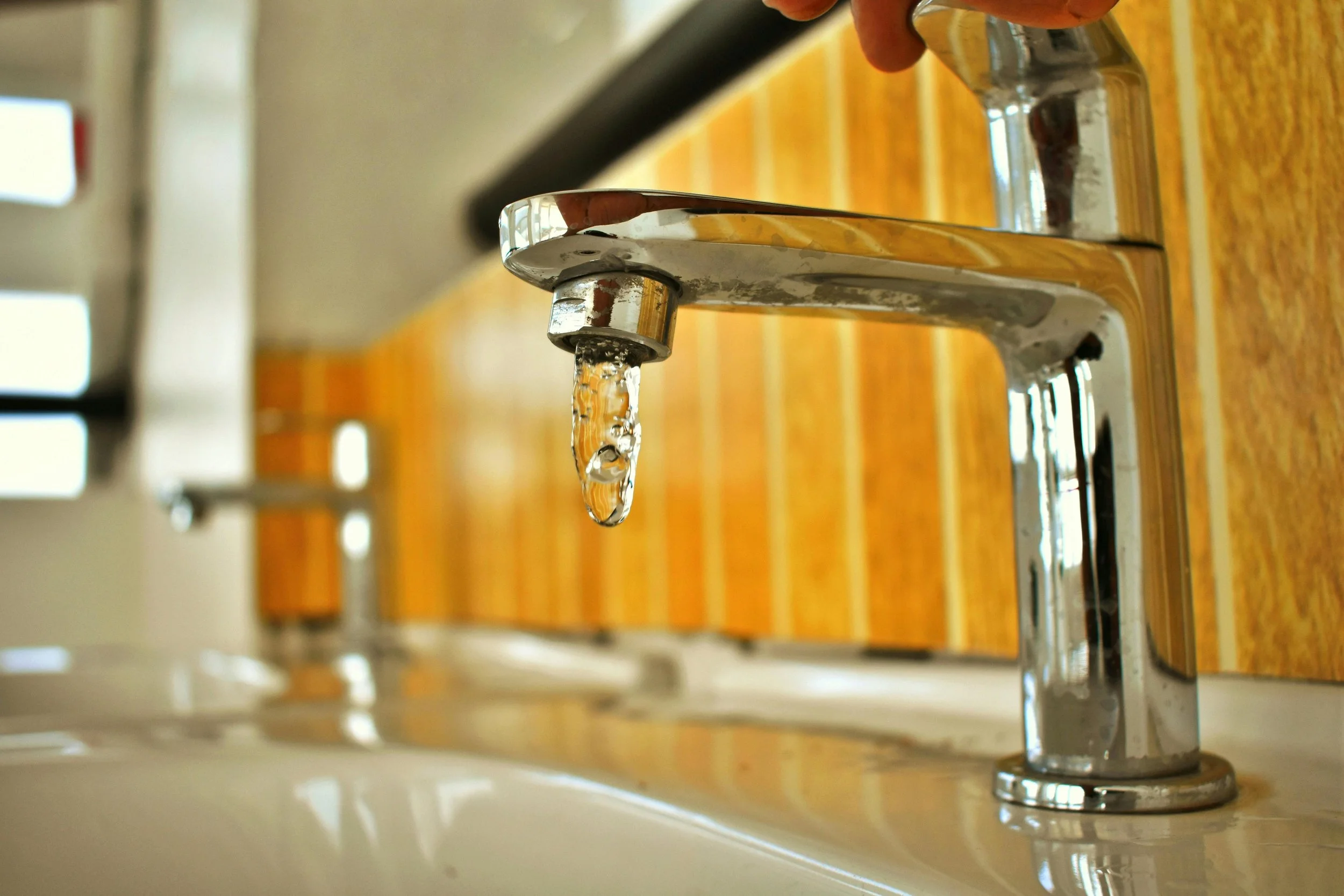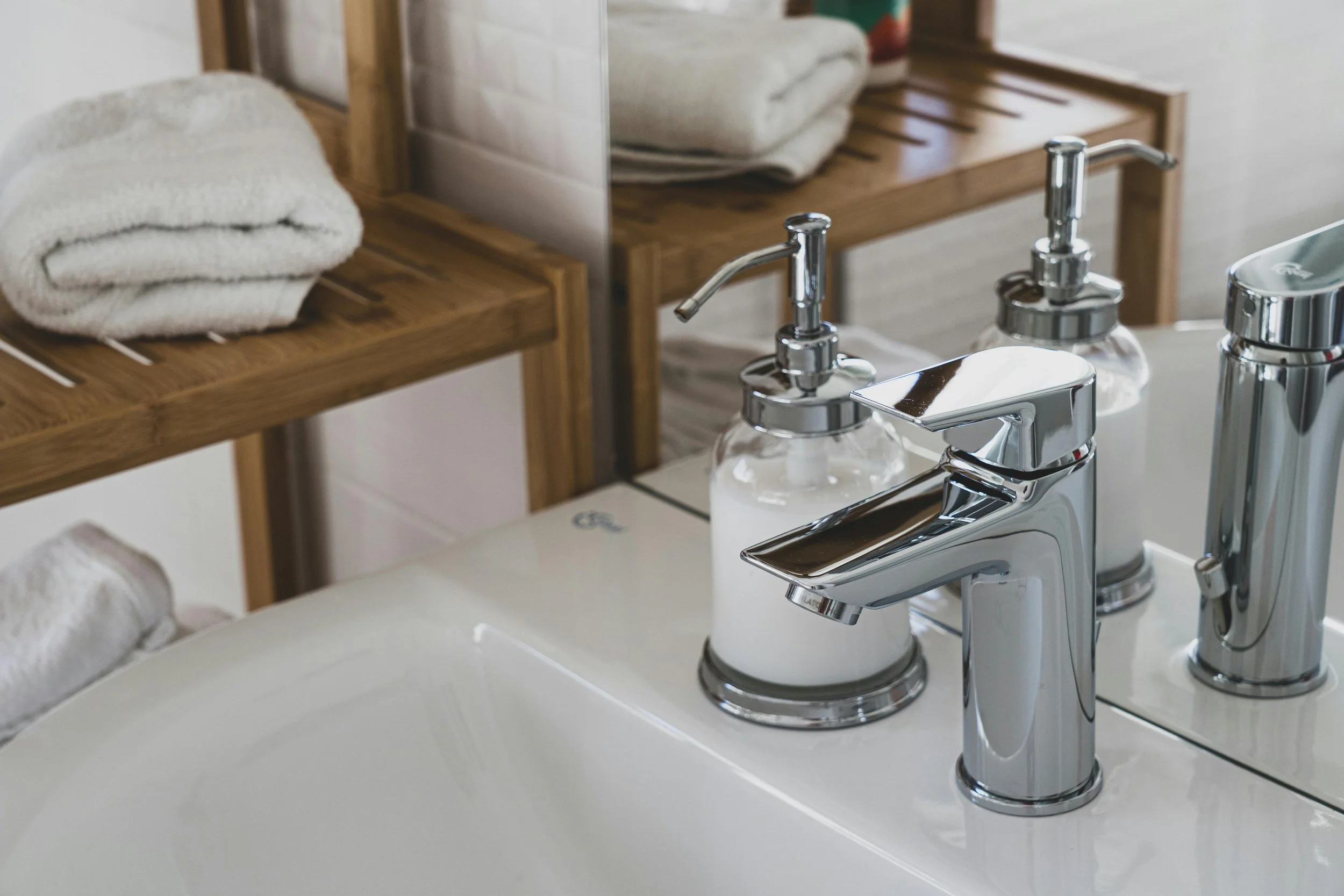How to Get Rid of Bad Smells from Sinks? Causes and Solutions
We’ve all been there—you walk into the kitchen or bathroom, and something just doesn’t smell right. You follow your nose, only to find it’s coming from the sink. Yep, that unmistakable smelly sink situation. Whether it’s your kitchen sink that smells bad or the bathroom sink, one thing’s clear: something down there needs attention.
In this post, we’re going to get to the bottom of it—literally—and figure out how to get rid of sink smell for good.
How to Paint Kitchen Cabinets: Step by Step for a New Look
Why Does My Sink Smell Bad?
Let’s break down what might be lurking beneath the plughole.
Dry or Empty P-Trap
If your sink hasn’t been used in a while, the P-trap (that U-bend under the sink) might’ve dried out. It normally holds water to block smells from rising. But when it’s dry?
Hello, sewer gas.
A quick fix—just run the tap for a few seconds.
Food Waste or Grease Build-up
Especially in kitchen sinks, bits of food and grease can hang around in the pipes.
They start to rot.
That rotting leads to smell.
And eventually, clogs.
So if your kitchen sink smells bad, it might be time to check what’s been going down the drain.
Bacteria and Mould Growth
Warm, moist, and dark? That’s bacteria paradise. Mould and microbes love drain pipes.
They feed off the gunk in there.
And they release smelly gases as they grow.
Slow Draining or Blockages
When the water doesn’t drain properly, it’s not just annoying—it’s a breeding ground.
Water that pools in the pipe = bacteria buildup.
Eventually, it turns into full-on stink.
Plumbing or Ventilation Issues
Sometimes it’s not about what’s in the drain, but how the system is set up.
Poor pipe ventilation can cause odours to get pushed back up.
Damaged seals or misaligned fittings might let smells escape.
Limescale and Mineral Deposits
Live in a hard water area? Then you know the limescale struggle.
These mineral deposits coat the inside of your pipes.
They trap bits of waste and create a perfect home for bacteria.
Common Reasons for Sink Smells
You’d be surprised how many ways a sink smells bad in the UK. Here's what tends to cause it:
Waste Build-up in Pipes
Over time, everything from soap scum to cooking debris clings to the inside of your drains.
It builds up slowly.
Then suddenly... your sink stinks.
Dry or Faulty P-Trap
We’ve mentioned it before, but it’s worth repeating.
If it’s not holding water properly, smells will come right through.
Sometimes the trap is faulty and might need replacing.
Backflow Due to Blockages
This one’s gross.
A big blockage can cause backflow—basically waste coming the wrong way.
Even if nothing spills out, you’ll definitely smell it.
Grease and Fat Deposits in Pipes
Pouring fat down the sink? Tempting—but dangerous.
It clings to the inside of your pipes.
Over time, it turns into a fatberg (yes, that’s a real term).
That leads to big blockages and a smelly mess.
Poor Plumbing Installation
It’s rare, but not unheard of—especially in older or DIY jobs.
Bad angles, missing valves, or incorrectly sized pipes can all lead to constant smell issues.
Lack of Ventilation
Pipes need to breathe too.
If there’s no airflow, those gases build up and have nowhere to go... but up.
Mould and Bacterial Build-up
Tiny leaks under the sink? Easy to miss.
But mould notices.
And once it starts growing, it won’t just smell bad—it can cause health issues too.
5 Ways to Prevent Sink and Drain Blockages
Looking to stay ahead of the stink? Here are a few easy wins.
Avoid Pouring Oil or Grease Down the Sink
We’ve all done it—poured leftover oil or bacon grease down the drain. Don’t.
It hardens as it cools.
Clings to your pipes.
Traps everything else that goes down.
Instead, wipe pans out with kitchen roll or pour cooled fat into a jar and bin it.
Use Baking Soda and Vinegar Weekly
This one’s a classic—and for good reason.
Pour about half a cup of baking soda down the drain.
Add a full cup of vinegar.
Let it fizz for 10–15 minutes, then rinse with boiling water.
It’s a gentle, natural sink unblocker that really helps prevent build-up.
Don’t Rinse Coffee Grounds or Tea Leaves
They don’t break down in water and clump together in your pipes.
Tip them into your food waste bin or compost instead.
Remove Hair Immediately
Especially in bathroom sinks, hair builds up fast.
Use a simple plughole catcher.
Empty it regularly (seriously—it takes seconds).
Get Your Plumbing Checked Regularly
If you’re constantly dealing with smells or blockages, get someone to have a look.
Booking a local plumber near me once a year can help spot issues before they turn into disasters.
Trust us—prevention is cheaper.
When to Call a Professional Plumber
There’s only so much you can do with vinegar and a plunger. Sometimes, it’s best to bring in a pro.
You’ll need one if:
You’ve tried everything and the smell keeps coming back
Water is backing up into the sink or other drains
There’s a gurgling sound when you drain water
You suspect cracked pipes or bad installation
A qualified plumber can unblock your sink UK-style and check for more serious issues behind the scenes.
Wrapping It Up
A smelly sink might seem like a small problem at first, but if left alone, it can turn into a major headache. Luckily, in most cases, a few changes to your habits (and a little baking soda) can make a big difference.
To recap:
Keep your P-traps full.
Stop pouring grease down the drain.
Use natural cleaners like baking soda and vinegar.
Clear out debris early (especially hair and food).
Don’t wait to call a plumber if things don’t improve.
Because the only thing worse than a sink that smells bad—is one that’s completely blocked.
Image Credit: pexels.com, pinterest.com















